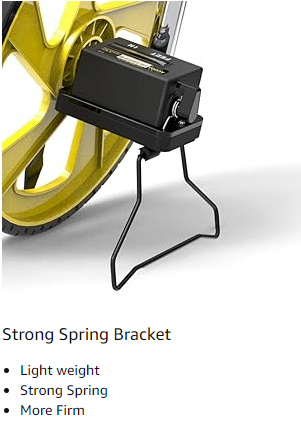
-
 Afrikaans
Afrikaans -
 Albanian
Albanian -
 Amharic
Amharic -
 Arabic
Arabic -
 Armenian
Armenian -
 Azerbaijani
Azerbaijani -
 Basque
Basque -
 Belarusian
Belarusian -
 Bengali
Bengali -
 Bosnian
Bosnian -
 Bulgarian
Bulgarian -
 Catalan
Catalan -
 Cebuano
Cebuano -
 Corsican
Corsican -
 Croatian
Croatian -
 Czech
Czech -
 Danish
Danish -
 Dutch
Dutch -
 English
English -
 Esperanto
Esperanto -
 Estonian
Estonian -
 Finnish
Finnish -
 French
French -
 Frisian
Frisian -
 Galician
Galician -
 Georgian
Georgian -
 German
German -
 Greek
Greek -
 Gujarati
Gujarati -
 Haitian Creole
Haitian Creole -
 hausa
hausa -
 hawaiian
hawaiian -
 Hebrew
Hebrew -
 Hindi
Hindi -
 Miao
Miao -
 Hungarian
Hungarian -
 Icelandic
Icelandic -
 igbo
igbo -
 Indonesian
Indonesian -
 irish
irish -
 Italian
Italian -
 Japanese
Japanese -
 Javanese
Javanese -
 Kannada
Kannada -
 kazakh
kazakh -
 Khmer
Khmer -
 Rwandese
Rwandese -
 Korean
Korean -
 Kurdish
Kurdish -
 Kyrgyz
Kyrgyz -
 Lao
Lao -
 Latin
Latin -
 Latvian
Latvian -
 Lithuanian
Lithuanian -
 Luxembourgish
Luxembourgish -
 Macedonian
Macedonian -
 Malgashi
Malgashi -
 Malay
Malay -
 Malayalam
Malayalam -
 Maltese
Maltese -
 Maori
Maori -
 Marathi
Marathi -
 Mongolian
Mongolian -
 Myanmar
Myanmar -
 Nepali
Nepali -
 Norwegian
Norwegian -
 Norwegian
Norwegian -
 Occitan
Occitan -
 Pashto
Pashto -
 Persian
Persian -
 Polish
Polish -
 Portuguese
Portuguese -
 Punjabi
Punjabi -
 Romanian
Romanian -
 Russian
Russian -
 Samoan
Samoan -
 Scottish Gaelic
Scottish Gaelic -
 Serbian
Serbian -
 Sesotho
Sesotho -
 Shona
Shona -
 Sindhi
Sindhi -
 Sinhala
Sinhala -
 Slovak
Slovak -
 Slovenian
Slovenian -
 Somali
Somali -
 Spanish
Spanish -
 Sundanese
Sundanese -
 Swahili
Swahili -
 Swedish
Swedish -
 Tagalog
Tagalog -
 Tajik
Tajik -
 Tamil
Tamil -
 Tatar
Tatar -
 Telugu
Telugu -
 Thai
Thai -
 Turkish
Turkish -
 Turkmen
Turkmen -
 Ukrainian
Ukrainian -
 Urdu
Urdu -
 Uighur
Uighur -
 Uzbek
Uzbek -
 Vietnamese
Vietnamese -
 Welsh
Welsh -
 Bantu
Bantu -
 Yiddish
Yiddish -
 Yoruba
Yoruba -
 Zulu
Zulu


Okt . 10, 2024 02:02 Back to list
Innovative Mechanisms of Ratchet Levers for Enhanced Mechanical Efficiency and Control
The Ratchet Lever A Ingenious Mechanism
The ratchet lever is a fascinating mechanical device that has found its place in various applications, from simple hand tools to complex machinery. It operates on the principle of allowing motion in one direction while preventing it in the opposite direction, making it an essential component in systems that require precision and control. Understanding the mechanism of the ratchet lever enhances our appreciation for mechanical engineering and how it impacts our daily lives.
At its core, the ratchet lever consists of a lever arm, a ratchet wheel (or pawl), and a spring mechanism that encourages alignment. When the lever is pulled, it engages the ratchet wheel, which allows the wheel to turn imperceptibly forward but not backward. This unique functionality is what distinguishes ratchet levers from other mechanical systems. The one-way movement permits the lever to build up tension with each pull, giving rise to an efficient transfer of energy.
Historically, the ratchet mechanism has its roots in ancient engineering. It was used in early clocks, allowing for the regulated movement of gears without the risk of backslipping. Over time, the design has evolved, with modern ratchet levers frequently utilized in everything from winches and hoists to socket wrenches. The versatility of the ratchet system enables it to be an integral part of both hand-operated tools and automated machinery, showcasing its indispensable nature in mechanical applications.
One of the remarkable aspects of the ratchet lever is its ability to withstand substantial loads while maintaining user-friendliness
. For instance, when using a ratchet wrench, the user can apply significant torque to loosen or tighten bolts without the fear of slippage. This safety feature is particularly essential in various industries, including automotive, construction, and manufacturing, where precise fastening is crucial.ratchet lever

The mechanism's design also speaks to its efficiency. By allowing movement only in one direction, it conserves energy and eliminates waste through unnecessary motion. In a world where efficiency is paramount, the ratchet lever serves as a prime example of elegant engineering. It allows for effective utilization of power, making tasks more manageable and quicker to accomplish.
Another interesting application of the ratchet lever can be found in bicycles, particularly in the freewheel mechanism. This system permits pedals to spin independently of the rear wheel, allowing cyclists to coast downhill without the pedals moving. This innovation, powered by ratchet principles, significantly enhances the functionality of bicycles, contributing to the evolution of cycling as both transport and sport.
Moreover, in everyday tools such as tape measures, the ratchet lever mechanism facilitates the user’s ability to lock the tape in place once pulled out, ensuring accurate measurements are taken. This feature combines simplicity with effectiveness, allowing for ease of use in various professions that demand precision.
In conclusion, the ratchet lever is a remarkable mechanical device that embodies the principles of engineering ingenuity. Its ability to allow one-way motion while preventing backslipping makes it invaluable in numerous applications, from hand tools to manufacturing systems. As technology continues to advance, the ratchet lever remains a testament to the brilliance of mechanical design, proving that sometimes the simplest solutions can have the most significant impacts on our daily lives.
Latest news
What Are Construction Tools and How Are They Used?
NewsJul.11,2025
Professional-Grade Duct Rodding Tools for Superior Cable Installation
NewsJul.11,2025
Enhancing Safety and Efficiency with Modern Hot Stick Solutions
NewsJul.11,2025
Empowering Cable Installation with Advanced Rodder Solutions
NewsJul.11,2025
Elevate Your Cable Installation Projects with Cable Pulling Tools
NewsJul.11,2025
Efficient Cable Handling Solutions: Cable Rollers for Sale
NewsJul.11,2025











